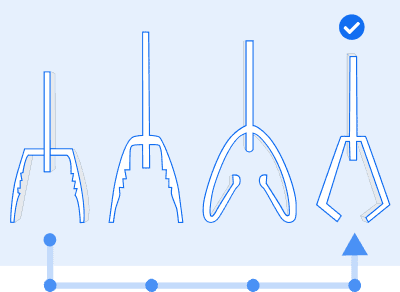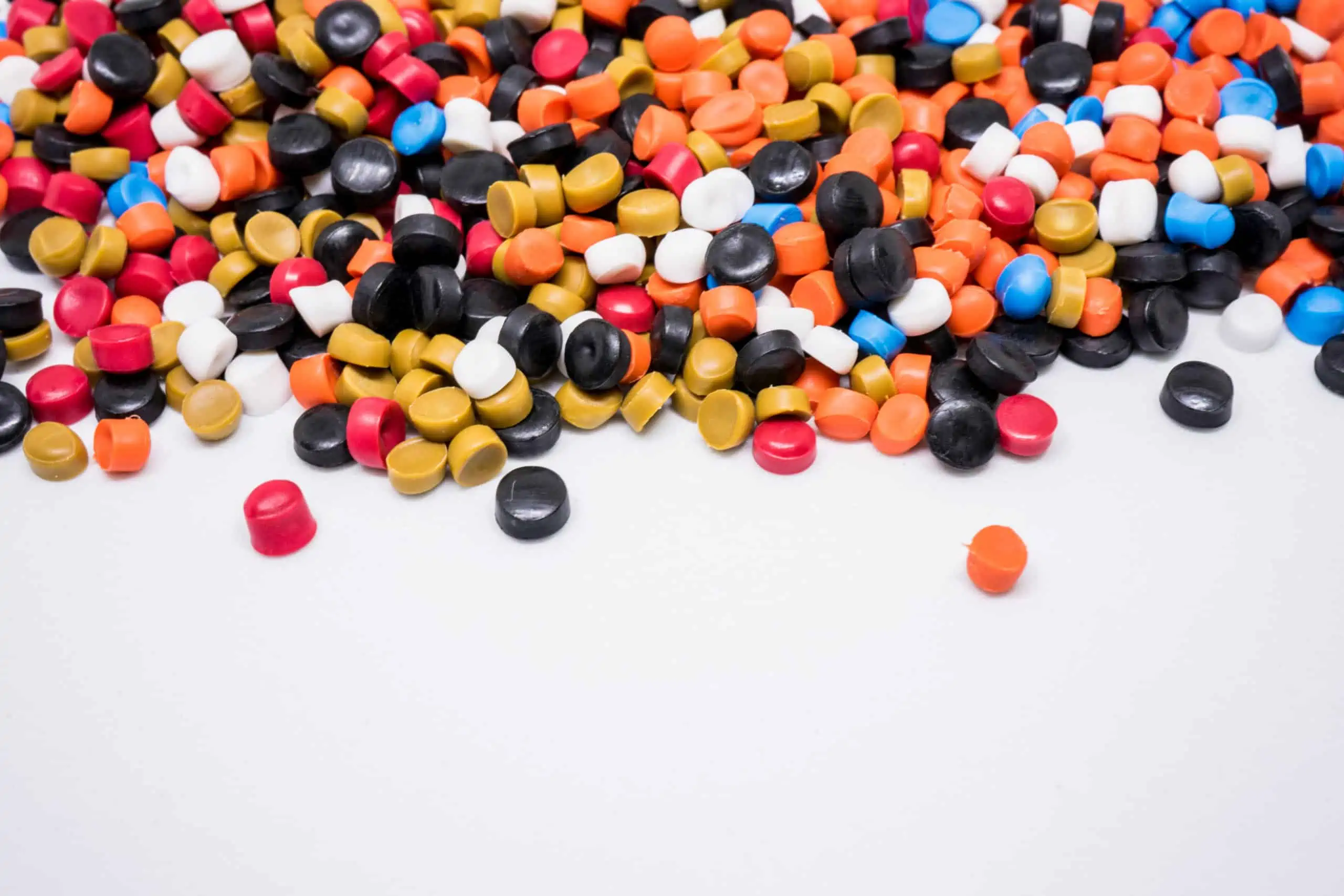

Thermoforming Services Online
Source custom thermoformed parts—whether for trays, panels, housings, or packaging—reliably in one place. Xometry provides cost-effective vacuum forming, supporting both prototypes and low-volume production. Our expert support at every stage, combined with attentive customer care, ensures a seamless experience from quoting to order tracking.
Tool production from up to 2 weeks
Ideal low-volume production runs or one-offs
Technical advice at all stages
Trusted by over 70,000 engineers & purchasing leaders worldwide














Best for low-volume production
What is Thermoforming?
Thermoforming (or vacuum forming) is the manufacturing process by which a sheet of heated plastic is forced and stretched (via vacuum or pressure) onto the surface of a mould to create parts. It is a versatile and cost-effective manufacturing process that plays a crucial role in various industries, including automotive, medical, and packaging. Thermoforming is ideal for simple geometries and parts with large tolerances, like custom trays, packaging, panels and housings, but is not suitable for small, detailed parts or high-volume production.
Technology Specifications
Our Manufacturing Capabilities
- Quantity: From 50 pieces
- Materials: Plastics (ABS, HDPE, LDPE, PC, PET, PMMA, PP, PS, PVC) and custom materials.
- Finishes: As formed (standard), sand blasting, custom
- Tolerance: DIN 16742 or tighter tolerances according to your 2D drawings
- Tooling: Production (from 20 business days)
Tooling Design Engineer, BMW

“Xometry delivers professionalism and ease. They take care of fulfillment so I don’t need to juggle or manage suppliers. We buy the quote and Xometry takes care of the rest.”
Tooling Design Engineer, BMW
The Easiest Way To Manage Your Projects
1. Submit Your Thermoforming Enquiry
Upload your designs, select the quantity, materials, surface finish, and other parameters, then submit a quote request.

2. Review and Quoting
A Xometry engineer reviews your enquiry within 24-48 hours to ensure all requirements are met. You receive an initial quote. Upon your approval, our engineers match your project with the most suitable manufacturer based on skills, availability, and other criteria. We then send you a final quote.

3. Project Kick-Off and DFM
Once you approve the final quote, we start the Design for Manufacturability (DFM) process. Xometry works with you to clarify and finalise all technical details before proceeding.
4. Mould Building and Sample Production
After finalising DFM, we set deadlines for mould building and first sample production (T1). You receive an order confirmation and an invoice for 50% of the mould costs. Our project manager oversees logistics and communication. You receive the T1 samples, along with a measurement report and material certificates for approval. Feedback on the T1 samples may lead to further iterations (T2, T3, etc.).
5. Full Production and Delivery
Once samples are approved, Xometry manages full-scale production, quality control, and part delivery. You pay the production costs upon receiving the parts.

6. Mould Ownership and Re-Orders
The mould lifespan is between 1 to 1,000,000 shots. The mould is owned by you and maintained by Xometry. The customer can easily re-order parts whenever required.
The Advantages of Our Digital Manufacturing Platform
Massive Network Capacity
Access the production capacity of over 2,000 qualified manufacturers in Europe and 10,000 worldwide, offering a wide range of production capabilities and certifications. Our extensive network enables the production of parts with any level of complexity, in almost any material, with precise tolerances and the required post-processing.
Human Expertise Behind Every Order
Our experienced team ensures smooth order management at every step. From initial design checks to seamless communication with manufacturing partners, we provide personalised feedback and suggest design improvements to optimise your parts and production processes.
Flexible Purchasing Solutions
Xometry offers flexible post-payment options for reliable corporate customers, a variety of payment methods to suit your needs, and the ability to establish framework agreements for specific prices and quantities, ensuring cost predictability and streamlined procurement processes.
Quality Assurance
Xometry is ISO 9001:2015 certified. Our seamless Manufacturing Supplier Network integration, in-house applications engineering team, and Xometry Quality Assurance Lab ensure we back every part we ship with top-notch quality.
Fast Delivery across Europe
Xometry delivers parts to all European countries, including the UK, Norway and Switzerland. See your delivery options for instant quotes right away or plan your custom shipments for complex projects.
Certifications & Inspection Reports
Xometry can provide various certificates (compliance with order types 2.1 and 2.2, raw material certificates for metals and plastics, heat treatment protocols, RoHS certificates, etc.) and inspection reports (CMM, First Article Inspection Report – FAIR, measurement reports, etc.).
Available Materials for Vacuum Forming
We provide quotes for most popular materials used for vacuum forming.

Plastics
- ABS
- HDPE
- LDPE
- PC
- PET
- PMMA
- PP
- PS
- PVC
Finishes Available for Vacuum Forming
As-formed
As-formed parts retain the natural surface texture and appearance that results from the mould.
Final result:
- Uniform surface texture, depending on the mould
- Smooth and glossy surface finish
Sand blasting
Sand blasting is a surface preparation technique involving high-velocity abrasive particles to remove contaminants and roughen surfaces.
It’s commonly used for cleaning, texturing, or preparing plastics for processes like painting.
Final result:
- Matte surface
- Enhanced paint adhesion

Custom
If you select a custom finish in the Instant Quoting Engine it will require manual review. Manual quoting usually 1-2 business days.
Submitting for manual review with a custom request does not guarantee a quote.
Stefano Grigis, Asitech

Stefano Grigis, Asitech
“We very much appreciated the speed of the platform: in zero time, I can get a quote for 1, 10 or 100 pieces, and test how much it might cost to produce with one material over another, which is crucial in the design phase but also to make realistic proposals for our customers.”
Frequently Asked Questions
Thermoforming is a manufacturing technique that involves heating a plastic sheet until it becomes pliable and then shaping it using a mould. It stands apart from processes like injection moulding or CNC machining due to its suitability for the cost-effective production of parts with relatively simple to moderately complex shapes.
The key steps in the thermoforming process are as follows:
- Heating: The plastic sheet is heated until it becomes pliable and can be shaped.
- Forming: The heated sheet is placed in a mould and pressed to take the desired shape.
- Cooling: The formed part is cooled, solidifying its shape.
Thermoforming can serve both prototyping and mass-production purposes, but has more part design limitations compared to injection molding. While it is often chosen for its cost-effectiveness in mass production, it also offers a valuable option for prototyping, allowing for rapid design validation before committing to expensive mass-production tooling.
Selecting thermoforming offers several advantages, including cost-effectiveness for small to medium production runs, a broad selection of compatible materials, and the ability to manufacture sizable components with minimal tooling investment.
Thermoforming is widely used across industries due to its versatility and ability to create custom plastic components. Key applications include:
- Packaging solutions: Thermoforming is extensively utilized in the packaging industry for creating custom blister packaging, offering tailored solutions for a variety of products.
- Medical device housing: It is essential for manufacturing housings and enclosures for medical devices and equipment, ensuring durability and precision.
- Automotive interior components: Thermoforming is employed to produce automotive interior parts, such as instrument panels, door panels, and trim, providing cost-effective and lightweight solutions.
Other Clients Reviews
“What amazed me about Xometry is a very empathetic approach, almost ‘micro-business style’, despite being a multinational: the ability to adapt to customer needs, with great responsiveness, and to immediately create a relationship of mutual trust.”

Mario Boaglio, Sferasol
“Discussions with my Key Account Manager about the gear knob were crucial in finding the best manufacturing process and achieving a result that was as close as possible to a production part. Unlike other companies and suppliers, I actually got to deal with a human contact.”

Stephane Develter, Develter
“With Xometry, it helps that there is an algorithm to instantly provide a price and a binding quote when you upload your part design. I thought that was amazing. Then you just complete your order and get a delivery date, which was met in our case. Wow, what a great process to work with!”

Thomas Kern, Atmos
“Collaborating with Xometry has put us in a strong position to make progress, particularly with mass production. Being able to outsource has significantly reduced our workload and we can still easily maintain quality and meet deadlines.”

Vincent Dufour, Neocean
“Xometry has provided us with great support in the CNC manufacturing of our MCU prototype enclosures, for both very small and medium-sized batches. Xometry’s customer support also ensures the right high-quality parts are delivered to the right location in record times on a very direct and personal basis.”

Christian Hornschuch, Sono Motors
Start Your Thermoforming Project with Xometry Now
Xometry Newsletter
Don’t Miss Out on Our Content & Discounts
Learn more about Xometry Newsletter.
By entering your contact information, you are agreeing to receive email communications about Xometry products and services. You may update your subscriptions or unsubscribe from these communications at any time using the link at the bottom of every marketing email or by contacting support. For more information, review our Data Protection Policy.
 Europe
Europe  United Kingdom
United Kingdom  Türkiye
Türkiye  USA & Canada
USA & Canada  Asia
Asia  الشرق الأوسط
الشرق الأوسط